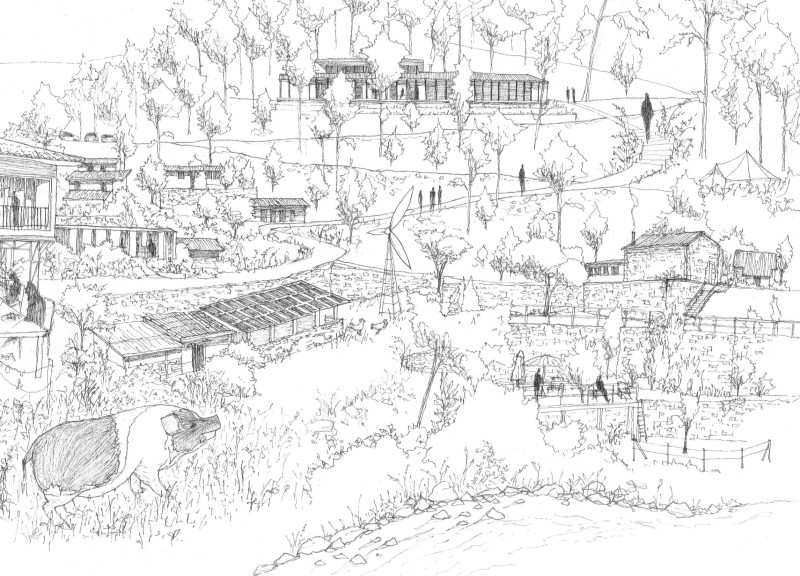5 key facts about this project
The project represents a contemporary architectural design that prioritizes sustainability, user experience, and harmony with its environment. Situated in [insert geographic location], this design effectively integrates modern architectural principles with local context and cultural references. The structure serves [describe the primary function, e.g., residential, commercial, educational], ensuring it meets the needs of its users while maintaining aesthetic cohesion in its surroundings.
The layout is organized into distinct yet interconnected spaces that promote functionality and accessibility. Key areas include [mention important spaces such as living areas, workspaces, community gathering spots, etc.], each carefully designed to facilitate natural circulation and interaction among users. The building's overall form showcases a blend of geometric clarity and organic shapes, allowing for both visual appeal and practical utility.
Sustainability is a core principle of this project, as demonstrated by the use of environmentally friendly materials and innovative energy-efficient systems. The incorporation of [mention any specific sustainable features, such as green roofs, solar panels, rainwater harvesting systems] underscores a commitment to reducing the environmental impact while enhancing occupant comfort.
This architectural project stands out due to its unique approach to integrating natural elements within the built environment. The strategic placement of [discuss specific design features like large windows, outdoor terraces, or landscaping elements] enhances the relationship between interior spaces and the exterior landscape. This design decision not only maximizes natural light but also promotes a seamless transition between the indoors and outdoors. The use of local materials further strengthens its connection to the surrounding environment, celebrating regional craftsmanship and resource availability.
The architectural design also embraces modern technologies to enhance user experience and functionality. Advanced building systems for heating, cooling, and ventilation have been carefully integrated to optimize performance and reduce energy consumption. The incorporation of smart technology within the building’s design allows for greater adaptability to user needs and environmental changes.
For a comprehensive understanding of the architectural details, including architectural plans, sections, and designs, readers are encouraged to explore the project presentation further. This investigation will yield deeper insights into the design methodologies and architectural ideas that define this project, illustrating its role in contemporary architectural discourse.



























